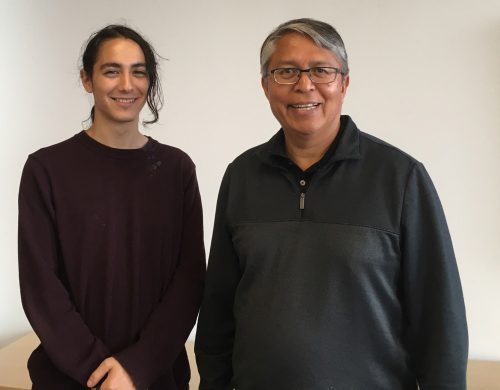ACEP intern explores intertie possibility for Northwestern Alaska
July 30, 2021

UAF student intern Jules D. Iknaaluk Mermelstein is performing a techno-economic feasibility study of a proposed medium-voltage intertie for the Alaska Village Electric Cooperative , NANA Regional Corp. , and the Northwest Arctic Borough on behalf of ACEP and Sandia National Laboratory as a part of his internship with UAF's Alaska Center for Energy and Power this summer.
Reliable access to high-quality electrical energy, as well as to food and water, is essential to a high quality of life. Communities of the Northwest Arctic Borough have some of the highest electricity prices in the nation.
A buried medium-voltage direct current intertie in Alaska’s Upper Kobuk River Valley has economic and logistic potential to significantly reduce electricity prices in the communities of Ambler, Shungnak and Kobuk. The techno-economic feasibility study aims to model economic and powerflow dynamics of the Upper Kobuk River Valley microgrids to determine the most economical intertie design.
Mermelstein is using HOMER Pro and Xendee modeling and simulation software for his 30-year analyses of various intertie development scenarios. The final product will be a detailed report comparing the changes to costs of energy between simulated intertie development scenarios. AVEC, NANA, NAB and the three communities will use the report findings as they explore various energy development projects.
Mermelstein is an undergraduate student in electrical engineering with a concentration in power and control at UAF. He is also finishing an occupational endorsement certificate in sustainable energy with the UAF Bristol Bay Campus. He plans to continue his UAF education towards a doctorate in engineering after graduation. Descendancy from the Shungnak tribe brings natural passion and motivation to his summer assignment. Mermelstein seeks to become familiar with the engineering process, study microgrids and establish his professional reputation. Power engineering science and professional practices highlight his summer’s learning experience.
Working directly with ACEP in its office on the fourth floor of the Engineering Learning and Innovation Facility building on the Fairbanks campus, his team is led by Mariko Shirazi. Michele Chamberlin is his program mentor/supervisor, and Robert Bensin is his point-of-contact for communication with external vendors.
This work is funded through a grant by Sandia National Laboratories . For more information about the project, please contact Mari Shirazi at mshirazi@alaska.edu .


